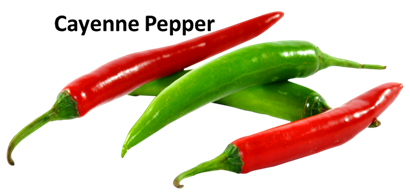Why should
you turn to herbs, supplements, and vitamins?
If you have arthritis, you wake up
in the morning hurting, you go to work hurting, and you go to bed hurting.
Chronic pain is very annoying, and anything that can help is lifesaving. Many
people also realize that herbs and supplements can help manage arthritis pain
minus the unpleasant effects of synthetic drugs.
Millions of people with arthritis are seeking a natural
approach by using supplements to get relief. Other than the prescribed
medicines and store-bought natural supplements, there are a lot of natural
remedies and herbs that have been used for centuries to subside the pain and
soreness of your bones, joints, and ligaments.
Here are a few herbs and supplements to help reduce inflammation and manage pain from arthritis.



Omega-3 Fatty Acids. A supplement found in fish oil and
other foods; Omega-3 Fatty Acids encourage the body to produce chemicals that
help control inflammation. This supplement may help ease stiffness caused by
inflammation in people with rheumatoid arthritis, but more research is needed.
Fatty fish such as salmon is rich in Omega-3 Fatty Acids.


Boswellia. It is also called frankincense. Alternative medicine practitioners praise it for its anti-inflammatory capabilities. It came from the gum of Boswellia trees indigenous to India.


Devils Claw. It eases tense muscles and pain in the neck, back, or shoulder with
its pain-relieving anti-inflammatory properties. It is also used to boost the
immune system.

Eucalyptus. Usually used in oral medications and topical oil extracts for a
variety of conditions. The plant leaves contain tannins which may be helpful in
reducing pain and swelling relief from arthritis and sore muscles when applied
to the affected areas.


Ginger. Ginger roots help relieve pain from arthritis. It acts as a
natural antidote for many health issues. The blend of anti-inflammatory and
painkilling properties makes ginger an incredible remedy.

Lavender. Lavender promotes relaxation, which in turn makes the pain
manageable.

Nettle. Aside from being a potent source of a wide array of vitamins and
minerals, it also has natural antihistamine and anti-inflammatory properties.

Turmeric. It is an excellent anti-inflammatory herb; it contains curcumin
and curcuminoids, which reduce the inflammation of the joints. Turmeric is also
a potent pain-reducing herb used all over the world for centuries.

Thunder god vine. It is one of the oldest herbs in
Chinese medicine. Extracts from skinned roots are known for suppressing an
overactive immune system. It makes thunder god vine a possible alternative
treatment for autoimmune diseases such as arthritis. It is advisable to apply
it directly to the skin.


Licorice root. Licorice is widely known for its
intense flavor. It contains 9 anesthetic, 10 analgesic, and 20 inflammatory
substances, which, make it an active pain-relieving herb.

Cinnamon. This versatile spice is loaded with antifungals and antioxidants.
These properties of cinnamon make it an ideal remedy for treating arthritis
pain and other kinds of joint pain.

Bay leaves. It is famous for its distinct smell and is used for cooking
purposes. However, other than that, these leaves are also used for getting
relief from the symptoms of arthritis and joint pain in general.

Garlic. It is a traditional remedy for arthritis. Also, several
evidence-backed studies prove the effectiveness of garlic in subsiding the
annoying and discomforting symptoms of arthritis.
Stinging Nettle. It is known to give relief from
arthritis pain. Natural supplements that contain an amount of stinging nettle.

Burdock Root. It contains essential fatty acids which makes it a great
anti-inflammatory food supplement.

Cayenne Pepper. Taken orally, it works to decrease
the concentration of substances in the pain-transmitting nerve cells of the
body. When applied through balm and ointments, it induces the dilation of
capillaries to increase blood circulation and warmth throughout the body.

Flaxseed. This healing plant is a source of Omega-3 (ALA) that fights
inflammation. Typically used in oil form, eat the seed raw and use them in
recipes.

Avocado Soybean Unsaponifiables (ASU). ASU is a
natural extract made from one-third of avocado and soybean oil. Blocks
pro-inflammatory chemicals, prevents deterioration of synovial cells, which
line joints, and may help regenerate normal connective tissue. According to a
study published in 2013 and 2008, it showed that ASU significantly reduced the progression of hip and knee osteoarthritis.


Borage Oil. It is a nutritional supplement that is rich in essential fatty
acids that can regulate the body's immune system and fight joint inflammation.
Borage seed oil helps improve the symptoms of rheumatoid arthritis.

Capsaicin. Capsaicin is a supplement taken from chili peppers. It works
mainly by reducing Substance P, a pain transmitter in your nerves. It is useful
in reducing pain and tenderness in affected joints.

Curcumin. It is a dietary supplement that contains curcumin
(diferuloylmethane) as well as other chemicals naturally found in turmeric and
pepper. Its essential components have antioxidant properties and can be part of
a diet that reduces the risk of disease and its effects.


Green-lipped Mussel. It is a nutritional supplement
taken from a type of mussel native to New Zealand. It contains omega-3 fatty
acids, which have anti-inflammatory and joint-protecting properties.

Indian Frankincense. It is an Ayurvedic remedy that is
usually purchased over the counter in capsule form. Indian Frankincense can help prevent the
production of inflammatory substances in the joints.

Melatonin. Melatonin is directly bound to essential cells involved in
autoimmune diseases. It either turn-off the signals that cause the membrane to
become hyperactive or activates signals that help to disease inflammation.


Pine Bark. It is a herbal extract and a nutritional supplement. Pine Bark is
rich in several bioflavonoids that have both anti-inflammatory and antioxidant
effects. The little evidence available suggests that pine bark extract may
result in an improvement in the symptoms of osteoarthritis.




